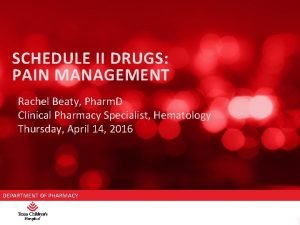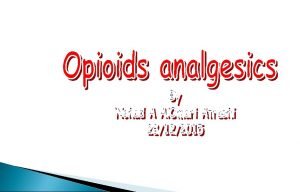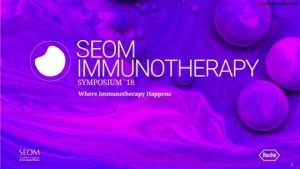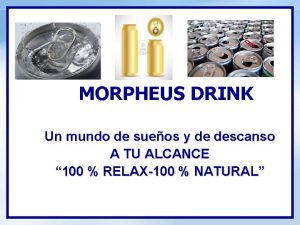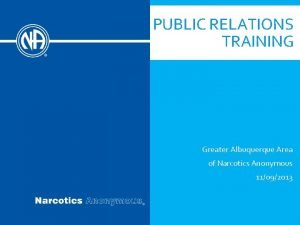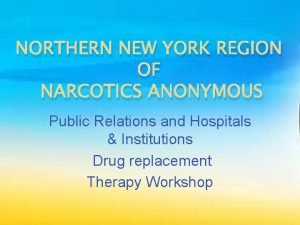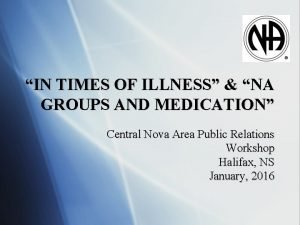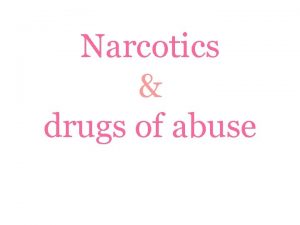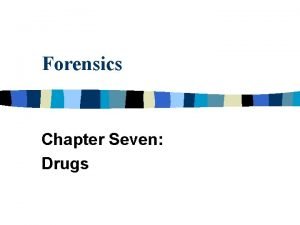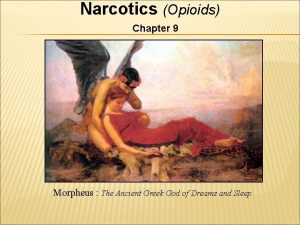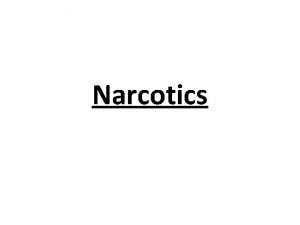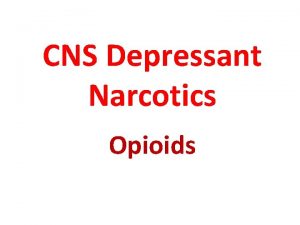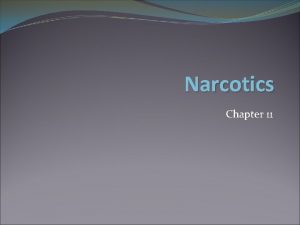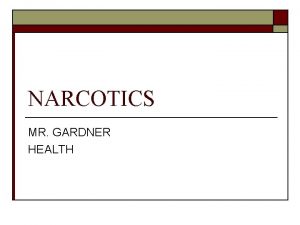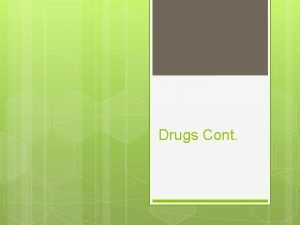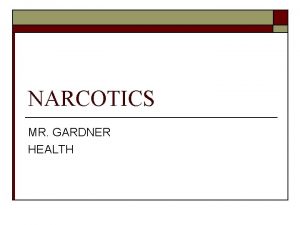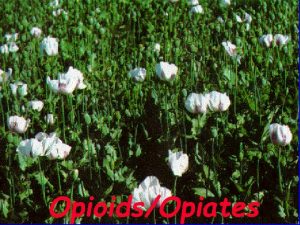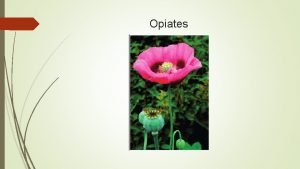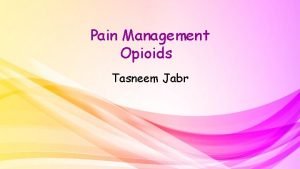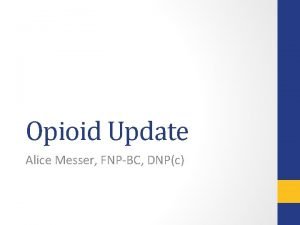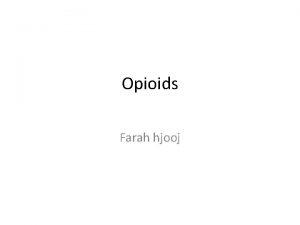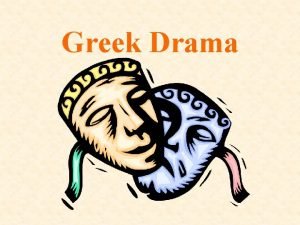Narcotics Opioids Chapter 9 Morpheus The Ancient Greek





























- Slides: 29

Narcotics (Opioids) Chapter 9 Morpheus : The Ancient Greek God of Dreams and Sleep PPT Slide Series 09 B

PHARMACOLOGICAL EFFECTS � The most common clinical use of the opioid narcotics is as analgesics to relieve both visceral (internal organs) and somatic (muscular) pain. � The opioid narcotics relieve pain by activating the same group of receptors that are controlled by the endogenous substances called endorphins. � Activation of opioid receptors blocks the transmission of pain through the spinal cord or brain stem and can also reduce the effects of stress.

PHARMACOLOGICAL EFFECTS

PHARMACOLOGICAL EFFECTS (CONTINUED) Morphine is a particularly potent pain reliever and often is used as the analgesic standard by which other narcotics are compared. With continual use, tolerance develops to the analgesic effects of morphine and other narcotics. Physicians frequently underprescribe narcotics, for fear of causing narcotic addiction, and legal implications.

PHARMACOLOGICAL EFFECTS (CONTINUED) The principle side effects of the opioid narcotics, besides their abuse potential, include: Drowsiness, mental clouding Respiratory depression Nausea, vomiting, and constipation Inability to urinate Constipation Drop in blood pressure Pupil Constriction

GUIDELINES TO AVOID PRESCRIBED OPIATE ABUSE Only use opioid analgesics when pain severity warrants Doses and duration of use should be as conservative as possible but permit adequate care. Patients should store these medications securely to prevent their theft and misuse Do not share with anyone else Doctors should screen patients for abuse risk before prescribing opioid drugs A treatment plan should be established that includes measurable goals for pain reduction

GUIDELINES TO AVOID PRESCRIBED OPIATE ABUSE (CONTINUED) Patients should be educated about potential abuse problems prior to being prescribed opioid drugs If significant abuse is suspected, the clinician should discuss concerns with patient to find appropriate steps to stop the abuse Opioid treatment should be stopped if use agreement is not being followed by the patient

ABUSE, TOLERANCE, DEPENDENCE, AND WITHDRAWAL All the opioid narcotic agents that activate opioid receptors have abuse potential and are classified as scheduled drugs. (See Table 9. 2) Tolerance begins with the first dose of a narcotic, but does not become clinically evident until after 2 to 4 weeks of frequent use.

SIGNS, SYMPTOMS, AND ABUSE

ABUSE OF OPIOID NARCOTICS � Tolerance occurs most rapidly with high doses given in short intervals. � Doses can be increased as much as 35 times in order to regain the narcotic effect. � Physical dependence invariably accompanies severe tolerance and typically expresses when these drugs are used for more than 2– 4 weeks. � Psychological dependence can also develop with continual narcotic use. © Able. Stock

ABUSE OF OPIOID NARCOTICS Because all narcotics bind to opioid receptors, cross-tolerance to different opioid drugs develops. � A user who is a long term dependent on opioids will experience sever withdrawal symptoms including exaggerated pain responses, agitation, anxiety, stomach cramps, vomiting, joint and muscle aches, , runny nose, and overall feeling of “having the flu”. � (Withdrawal Timeline, next slide)

ABUSE OF OPIOID NARCOTICS National Institute on Drug Abuse

HEROIN USE/ABUSE Heroin (diamorphine)is classified as a Schedule I drug. Diamorphine (heroin) was first synthesized in 1874 by C. R. Alder Wright, who combined morphine with various acids. He boiled anhydrous morphine alkaloid with acetic anhydride producing a more potent, acetylated form of morphine (diacetylmorphine or diamorphine, aka. heroin) heroin was marketed as an antitussive in 1895

HEROIN USE/ABUSE CDC – “In 2017, nearly 494, 000 people in the United States (12 -years old or older) reported using heroin in the past year. CDC –“Past misuse of prescription opioids is the strongest risk factor for starting heroin use, especially among people who became dependent upon or abused prescription opioids in the past year. ”

HEROIN-RELATED OVERDOSE DEATHS CDC : During 2017, over 15, 000 people died from drug overdoses involving heroin in the United States Heroin-related overdose deaths increased five-fold from 2010 to 2017. From 2016 -2017, heroin overdose death rates remained stable. In 2017, males aged 25 -44 had the highest heroin death rate which was a decrease of 4. 5% from 2016

HEROIN SUPPLY AND USE More than 90% of world’s heroin is from Afghanistan. (See “Here and Now – Afghans’ Drug War”, p. 298, text) Pure heroin is a white powder. Heroin is usually “cut” (diluted) with lactose. When heroin first enters the United States, it may be 95% pure; by the time it is sold, it may be 3% to 70% pure. If users are unaware of the variance in purity and do not adjust doses accordingly, results can be fatal.

HEROIN COMBINATIONS (CONTINUED) Heroin has a bitter taste and is often cut (diluted) with quinine, which can be a deadly adulterant. Heroin plus the artificial narcotic fentanyl can be dangerous due to its unexpected potency. Heroin is most frequently used with alcohol. Heroin combined with cocaine is called “speedballing. ”

HEROIN AND CRIME Factors related to crime: Pharmacological effects encourage antisocial behavior that is crime-related Heroin diminishes inhibition promoting illegal activity Addicts are often self-centered, impulsive, and governed by need Cost of addiction forces user to resort to criminal activity to support dependency Similar personality of criminal and addict – begin to engage in crime and heroin use at same time

PATTERNS OF HEROIN ABUSE Heroin has become purer (60% to 70% purity) and cheaper (~$10/bag). Greater purity leads users to administer heroin in less efficient ways (smoking and snorting) to avoid dangers of intravenous use. (Intravenous use is associated with HIV/AIDS and viral hepatitis) Many youth believe that heroin can be used safely if not injected.

PATTERNS OF HEROIN ABUSE (CONTINUED) Because of its association with popular fashions and entertainment, heroin has been viewed as glamorous and chic, especially by many young people, although lately this attitude has been changing. Emergency room visits each year due to heroin overdoses amount to ~ 250, 000.

STAGES OF HEROIN DEPENDENCE Initially, the effects of heroin are often unpleasant. Euphoria gradually overcomes the aversive effects. The positive feelings increase with narcotic use, leading to psychological dependence. In addition to psychological dependence, physical dependence occurs with daily use over a 2 -week period. If the user abruptly stops taking the drug after physical dependence has developed, severe withdrawal symptoms result. (6 -12 hrs)

METHODS OF HEROIN ADMINISTRATION Sniffing the powder Injecting it into a muscle (intramuscular) Smoking Mainlining (intravenous injection [IV] )

METHODS OF HEROIN ADMINISTRATION Fear of contracting HIV from IV heroin use has contributed to the increase in smoking or snorting heroin. Many who start by smoking or snorting progress to IV administration due to its more intense effects. Mainlining drugs (IV) damages veins causing them to collapse and become inaccessible.

HEROIN AND PREGNANCY Heroin use by a pregnant woman leads to: Physical dependence on heroin in the newborn Infant withdrawal symptoms occur after birth in the newborn (Note: similar withdrawal occurs in newborns of any woman who uses significant amounts of opiate drugs during pregnancy, including prescribed opiate painkillers). These symptoms are called Neonatal Abstinence Syndrome (see causes and symptoms)

WITHDRAWAL SYMPTOMS After the effects of the heroin wear off, the addicts have only a few hours in which to find the next dose before severe withdrawal symptoms begin. A single “shot” of heroin lasts 4 to 6 hours. Withdrawal symptoms: runny nose, tears, minor stomach cramps, loss of appetite, vomiting, diarrhea, abdominal cramps, chills, fever, aching bones, and muscle spasms. (see table 9. 4, next slide)

WITHDRAWAL SYMPTOMS

TREATMENT / RECOVERY FROM HEROIN USE Goal is to help the user to live a productive and satisfying life without drug use. However, therapeutic compromise (using substitute drugs) is often necessary. Methadone or buprenorphine are frequently used to help narcotic addicts. Naltrexone (Vivitrol) is an opioid antagonist These drugs block withdrawal symptoms. Naloxone is used form medical emergencies of opioid (heroin) overdose See also Figure 9. 1, p. 303 (next slide)

TREATMENT

TREATMENT / RECOVERY FROM HEROIN USE Treatment should also include regular counseling and other supplemental services such as job training. Treatment is considered successful if the addict: 1. Stops using heroin 2. No longer associates with dealers and users 3. Avoids dangerous activities associated with heroin use 4. Improves employment status 5. Refrains from criminal activity 6. Is able to enjoy healthy interpersonal relationships End of PPT Series 09 B
 Schedule 2 drugs
Schedule 2 drugs Greek god morpheus
Greek god morpheus Morpheus clinical trial
Morpheus clinical trial Morpheus coca cola
Morpheus coca cola Morpheus foundation
Morpheus foundation Portable raman analyzer for hazmat and narcotics
Portable raman analyzer for hazmat and narcotics Rogue drone asteroid infestation
Rogue drone asteroid infestation Narcotics anonymous meetings albuquerque
Narcotics anonymous meetings albuquerque Narcotics anonymous
Narcotics anonymous Na in times of illness
Na in times of illness Narcotics drugs
Narcotics drugs Narcotics
Narcotics Handheld narcotics analyzer
Handheld narcotics analyzer Communication in ancient time
Communication in ancient time Ancient india vs ancient china
Ancient india vs ancient china Past simple tense markers
Past simple tense markers Prostas greek architecture
Prostas greek architecture Greek floral arrangements
Greek floral arrangements Theatron greek theatre definition
Theatron greek theatre definition English georgian flowers
English georgian flowers Greek theater masks
Greek theater masks Ancient greek personal pronouns
Ancient greek personal pronouns Greece map
Greece map Where was ancient greece located on a map
Where was ancient greece located on a map Ancient greek theatre costumes
Ancient greek theatre costumes Greek amphitheatre labeled
Greek amphitheatre labeled Classical greek instruments
Classical greek instruments Theatron greek theatre definition
Theatron greek theatre definition Cultural values of ancient greece
Cultural values of ancient greece Map of ancient greek city states
Map of ancient greek city states
